Mission Accomplished
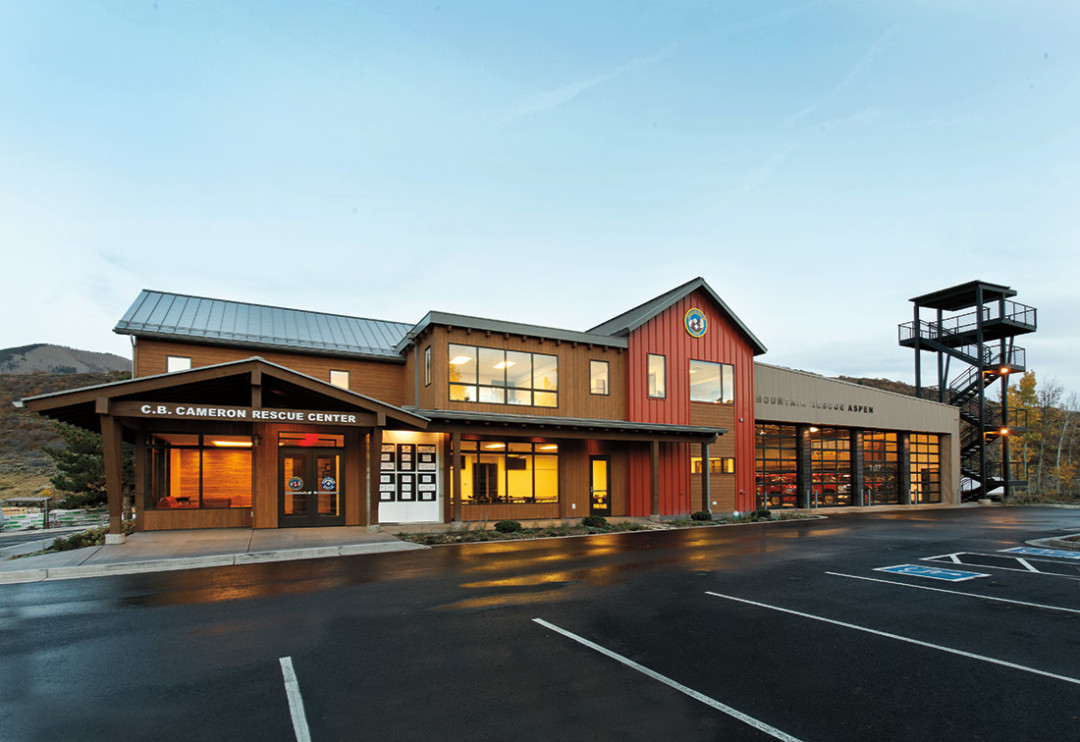
Image: Ross Kribbs
In November 1977, a small airplane on which fifteen-year-old Lynda Cameron was flying with her family crashed into a ridge in the wilderness outside Aspen. The girl’s father was killed. Six others on board, including the pilot and Cameron’s mother and brother, survived. The group spent two dangerously frigid nights stranded in the backcountry before being spotted by a team of Mountain Rescue Aspen members and brought to safety.
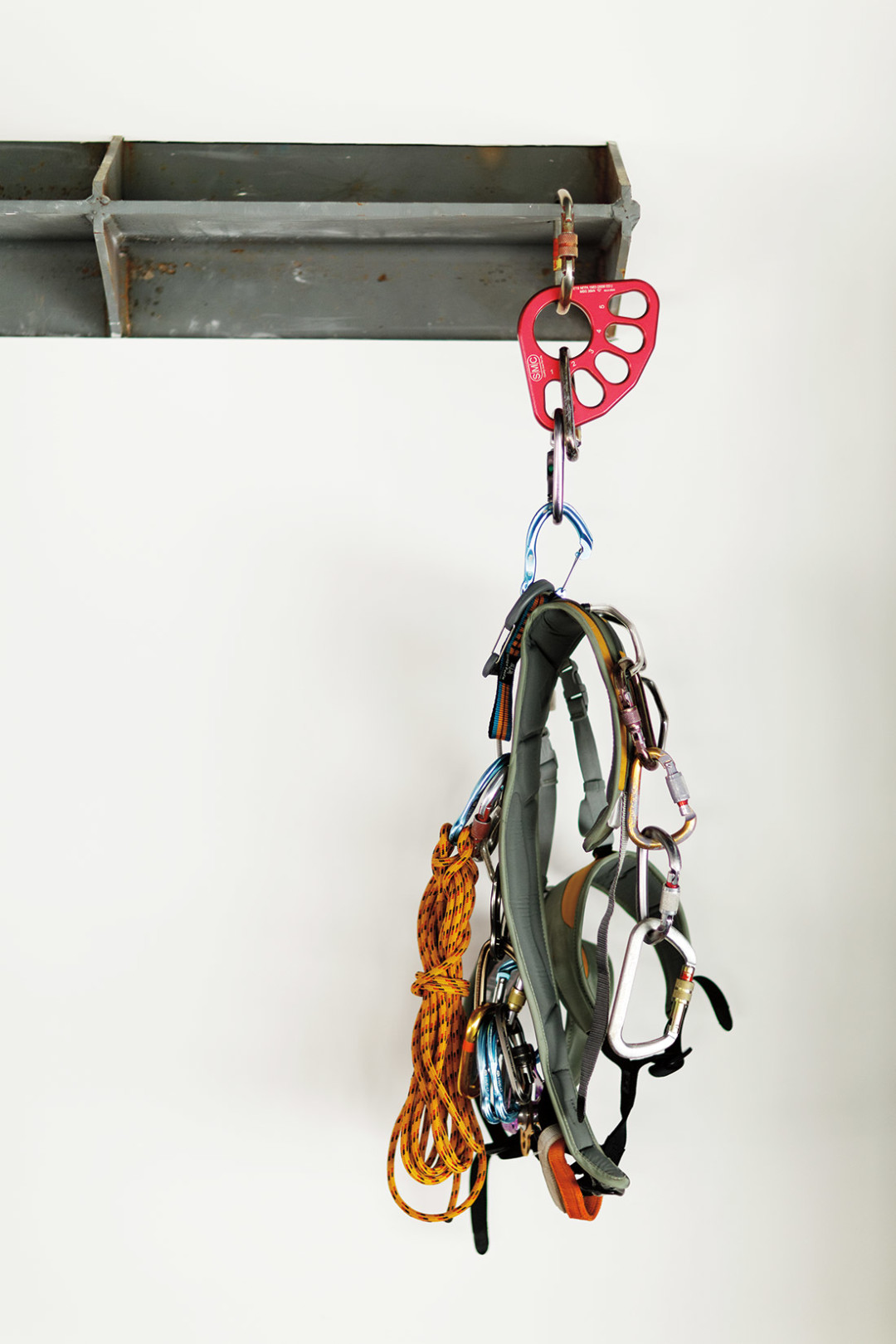
Thirty-five years later, Cameron handed the organization a thank-you note: a seven-figure check for the construction of a new facility. Last September, after half a century headquartered in a sagging 1960s pan abode on Main Street, the fifty-member all-volunteer MRA corps moved into the C.B. Cameron Rescue Center, named for Cameron’s late father. For Mountain Rescue, the 14,000-square-foot, state-of-the-art facility is a game-changer. For outdoor adventurers who run afoul in the backcountry, it could well be a lifesaver.
Consider this: historically, after an incident call would go out from the Pitkin County Sheriff’s office (MRA is an independent nonprofit that operates as a branch of the sheriff’s department), thirty to forty members would begin piling into MRA’s Main Street cabin, about the size of a small doublewide. The room would grow so clamorous as volunteers geared up that team leaders would have to step outside to discuss rescue routes or “just to hear themselves think,” says MRA board president Jeff Edelson. Corralling rescue vehicles was a further challenge. “Equipment was spread all over the county,” says twenty-five year MRA veteran John Zell. “Snowmobiles at T-Lazy-7 or the parking department, trailers at the Forest Service buried under four feet of snow. It was a nightmare.” Members could require more than an hour to get out the door—an hour, Zell notes, that could mean somebody’s life.
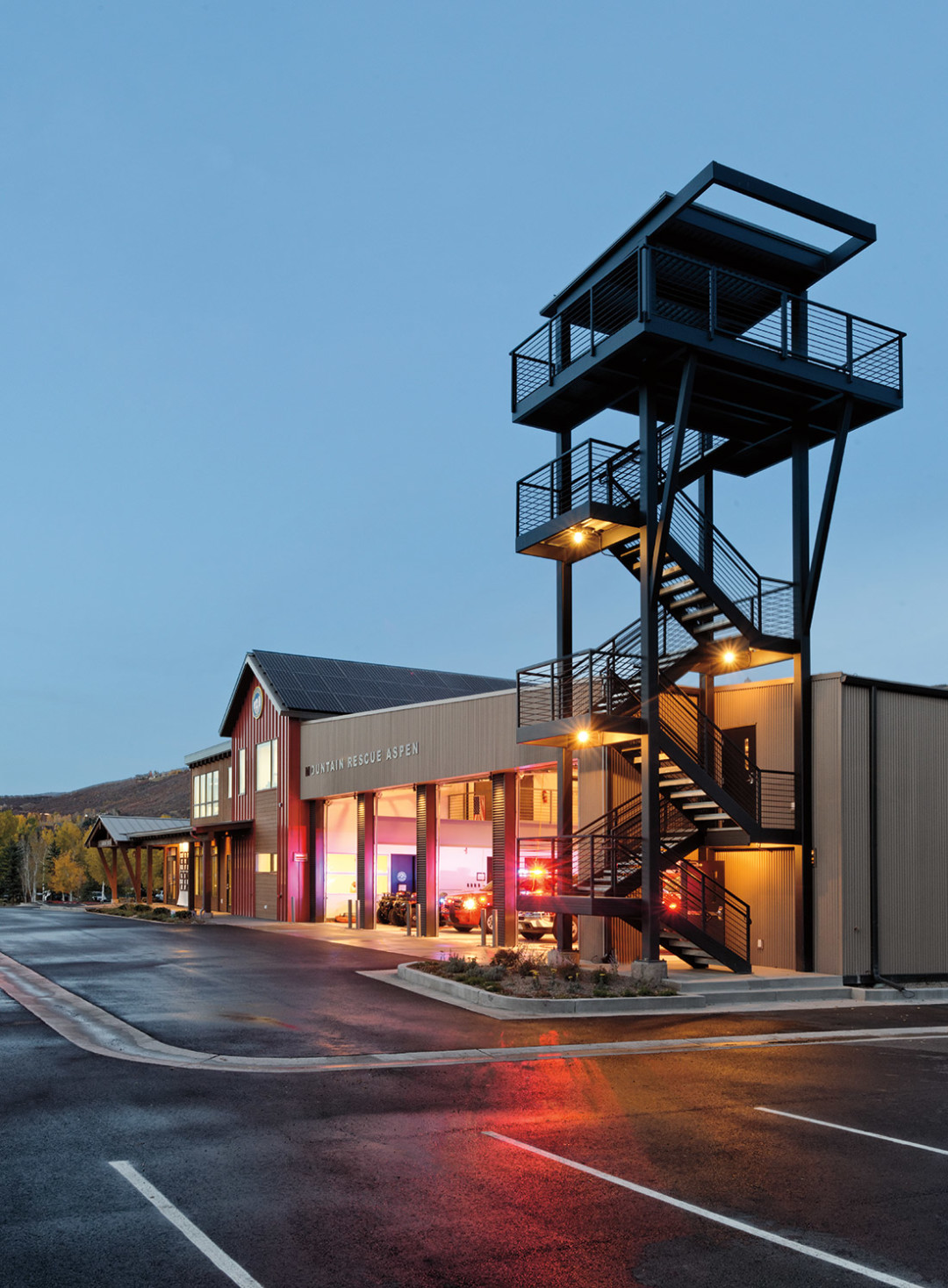
“The biggest impact of this building is having all our gear under one roof,” says Zell, one of a handful of MRA members who worked with Charles Cunniffe Architects on programming the new facility. “Now we’re out the door in two minutes.”
Today, neat rows of apple red Mountain Rescue vehicles—each with its own trailered snowmobile at the ready—line the four-bay garage, a vast bright space that keeps machinery in mission-ready, tip-top shape. Its wide mezzanine also serves as a training loft for members, where colored ropes and pulleys span the distance like streamers at a child’s party. The highline system enables the team to simulate conveying litters and people across rivers and ravines. Whereas before members drove an hour up Independence Pass for training exercises, now those exercises are conducted largely in the garage or outside on the forty-five-foot high training tower. And the controlled environments are a particular boon for training newer members, says Edelson.
The steel tower on the south end of the building makes load-testing equipment and practicing ascension and repelling techniques efficient and convenient. The tower, which exceeds local height restrictions, was initially met with resistance from Pitkin County’s planning and zoning representatives. However, “once they understood it’s a safety element not a novelty,” says CCA project architect Ryan Hoffner, “they liked it. It became a symbol of the benefit [of the building].”
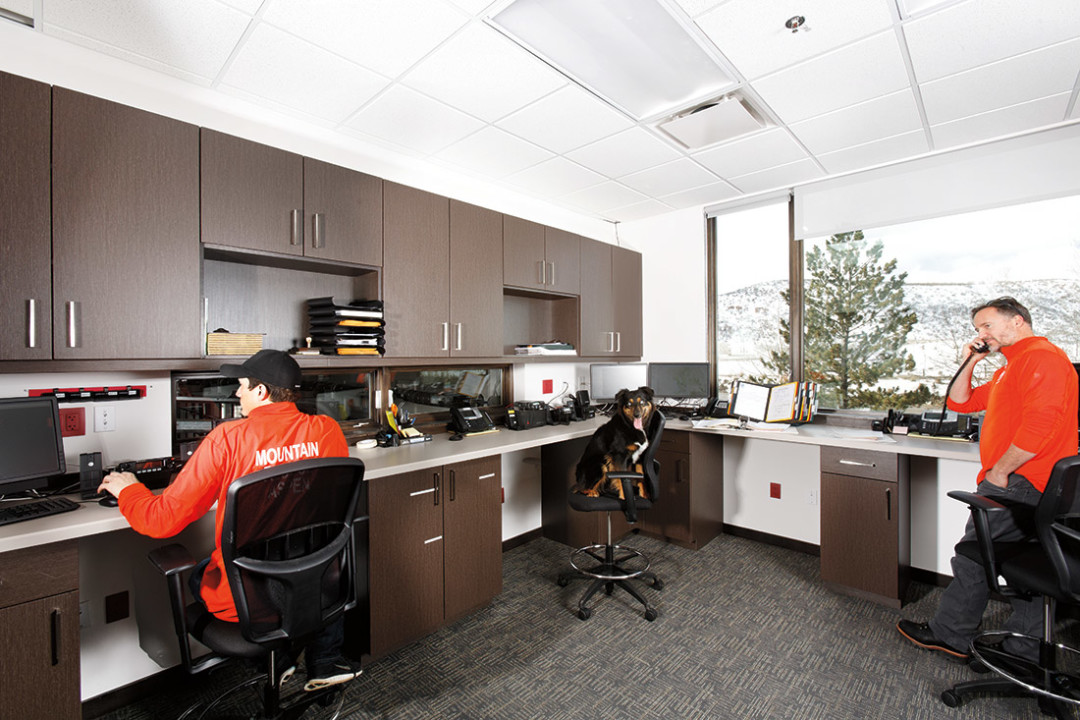
The second floor Incident Command and Control Room, adjacent to the garage, provides ample space for directing missions. Glass doors minimize noise and other distractions when closed on the spacious anteroom, where members gather before being dispatched into the field. Above a bank of high-tech communication stations sits a low-tech but decidedly useful west-facing plate glass window. The window delivers direct views of Pitkin County Airport. Based on sight alone team leaders can inform field members precisely when a rescue helicopter takes off—or, as Zell notes, when one lands and “it’s time to go get the body.”
The building has a kitchen for feeding up to sixty; two sleeping rooms for keeping exhausted team members off the highway after a mission (rescue excursions can stretch from a few hours to a few weeks); a spacious locker room with showers and five private and public restrooms. “We used to use the bathrooms at the Hickory House,” Edelson smiles, shaking his head.
Just off the lobby on the main level (slated for a Mountain Rescue Aspen museum) is the Central Training Room—a seventy-seat public meeting space where MRA holds internal meetings and public backcountry safety seminars. The goal going forward is to focus on education and prevention—“to get out ahead of it,” says Edelson. “We have enough missions, thank you.” The room is wired to the hilt and designed for cross-utilization by county and state officials in the event of a large incident, says Zell.
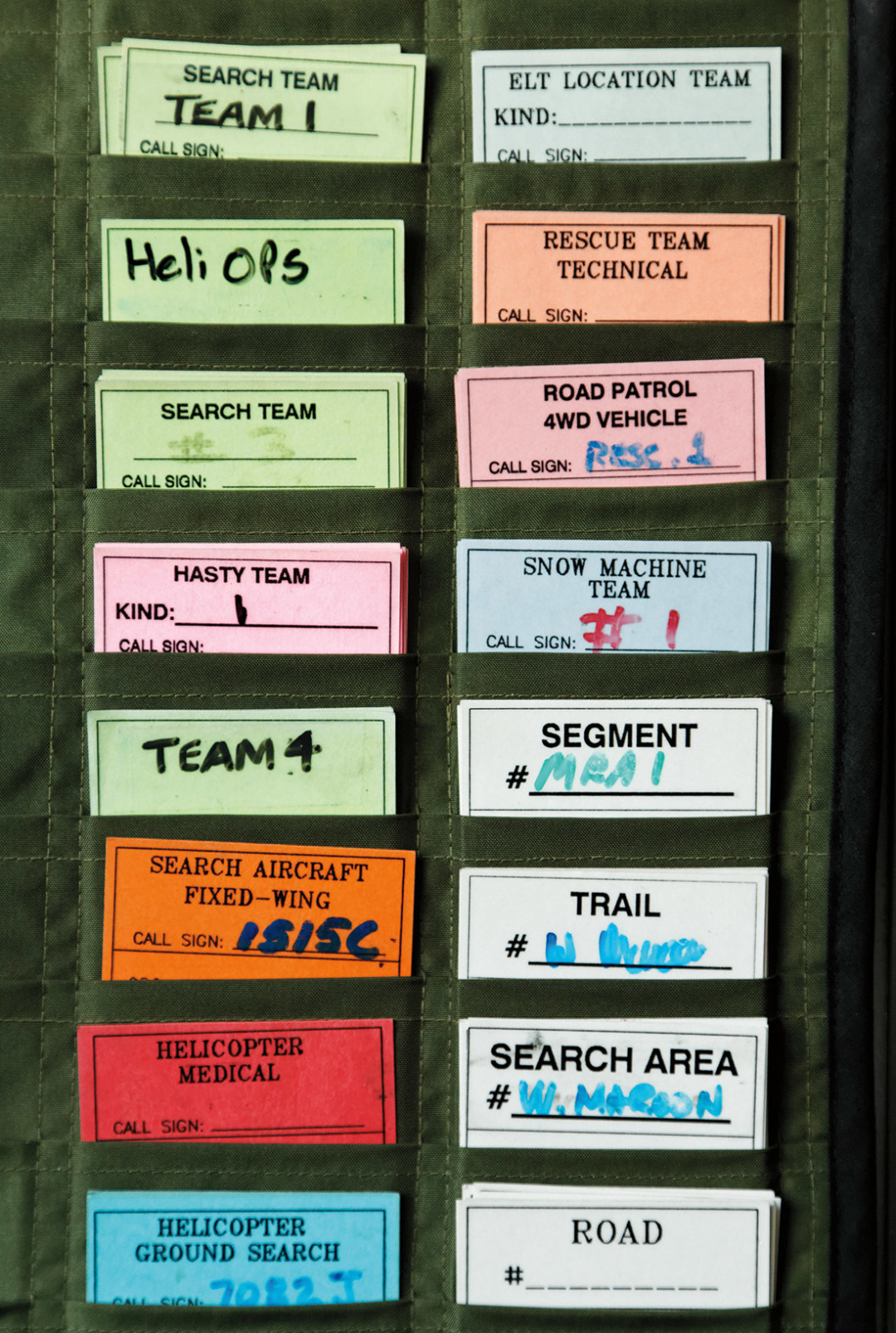
But for all its institutional programming—including a map room, a radio room, and a backup sheriff’s department dispatch room should a major incident occur downtown (think: the Jim Blanning bomb scare a few years back)—the built vernacular incorporates residential and regional elements as well. Gable and shed rooflines help break up the overall massing and bring a human scale to the building. And, in a direct nod to the organization’s humble history, the timbered entry replicates the original pan abode.
Just inside that entry, in a corner window, hangs a twisted length of vintage rescue rope unearthed recently in a backcountry hut. Attached to the rope is a large lamp commissioned by Lynda Cameron and forged by a local blacksmith. Like the beacon in a lighthouse, the lamp is always on. “Twenty-four, seven,” says Zell.
“It sends a message,” says architect Charles Cunniffe: “In Aspen, we take care of you. There’s a group here that’s got your back.”













































